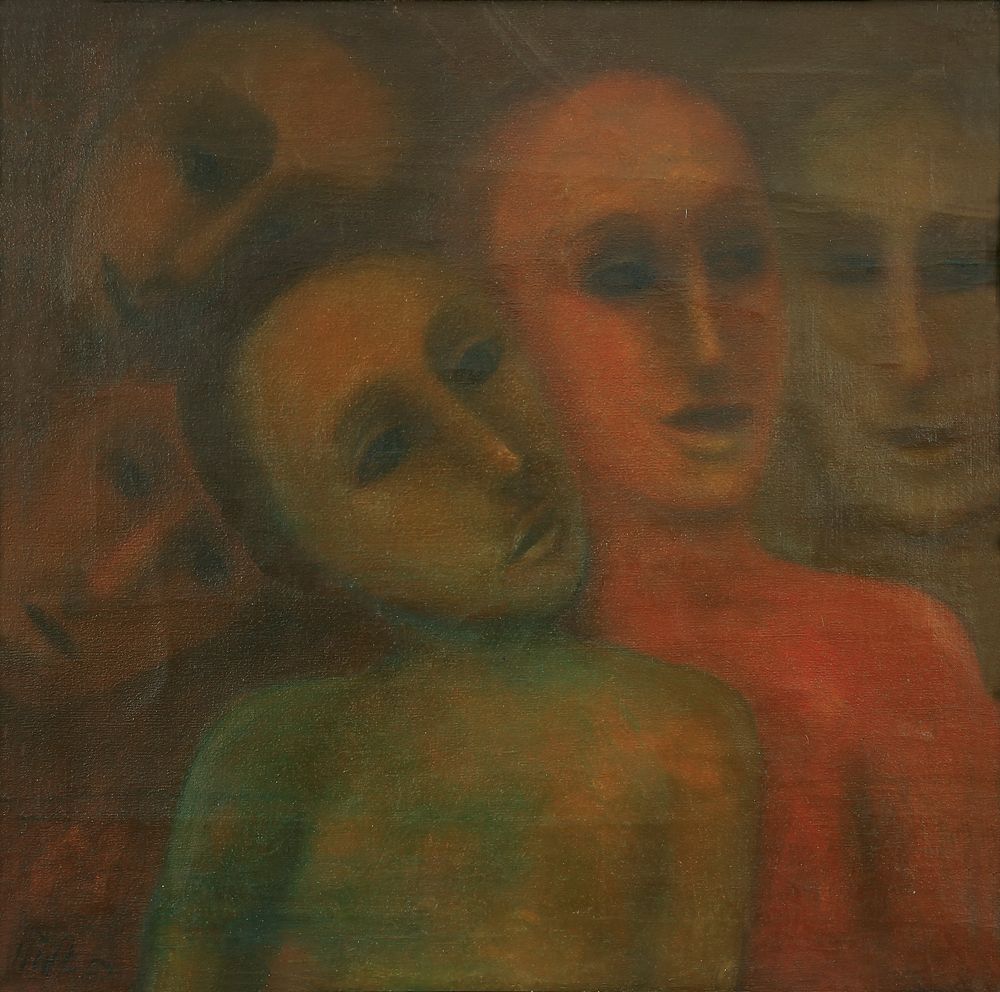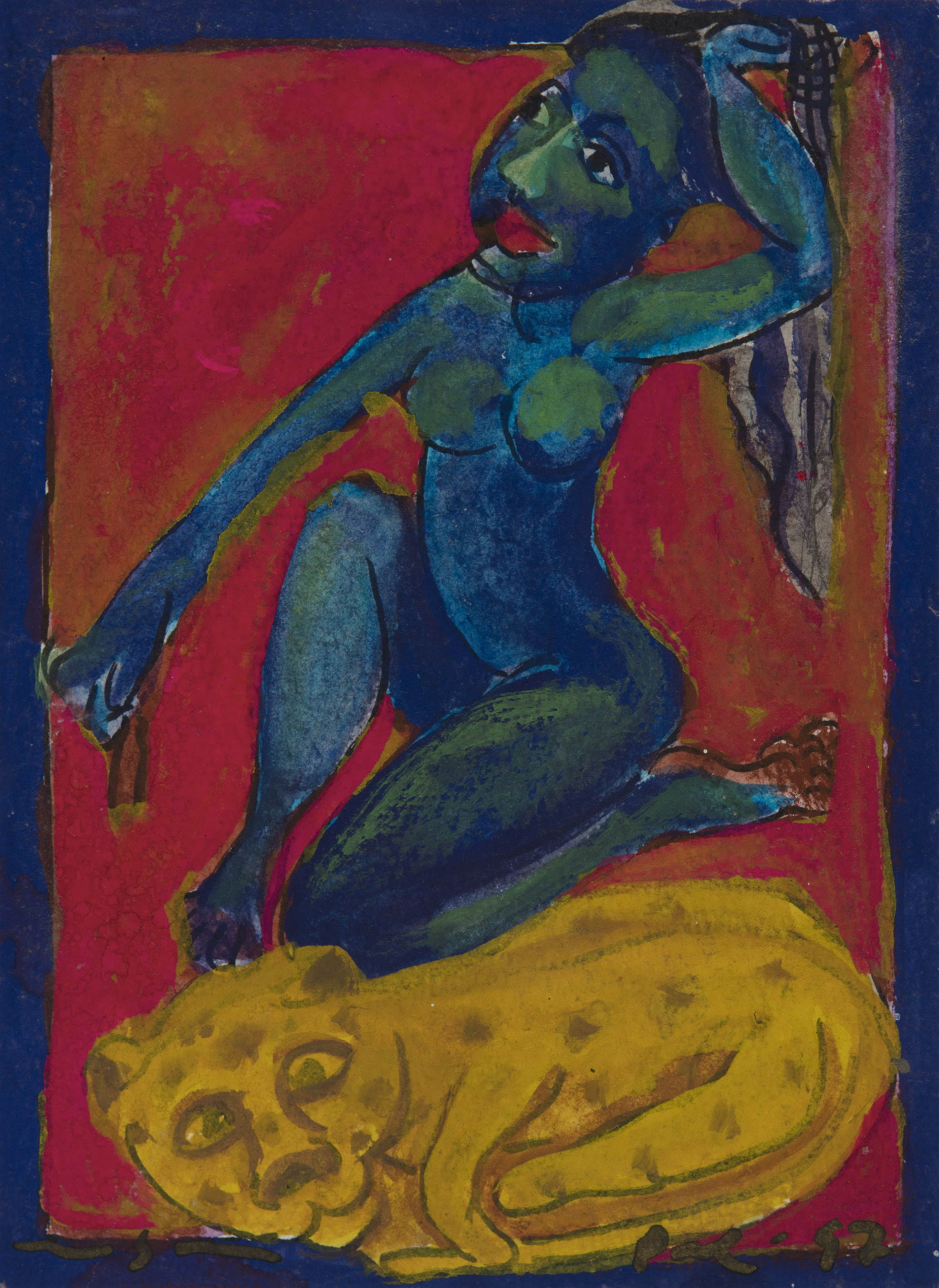Gogi Saroj Pal (1945-2024): In Memoriam
Gogi Saroj Pal (1945-2024): In Memoriam
Gogi Saroj Pal (1945-2024): In Memoriam

Gogi Saroj Pal in her East of Kailash studio, New Delhi, August 2023. Photographer: Shatadeep Maitra
Gogi Saroj Pal was a multifaceted contemporary artist who expressed her creativity through various mediums, including installation, painting, sculpture, graphic print, ceramics, jewellery, weaving and limited edition prints.
Born in Neoli, Uttar Pradesh, she studied art in Banasthali, Rajasthan, and took a diploma at the Government College of Arts and Crafts, Lucknow and a postgraduate diploma in painting from New Delhi’s College of Art. She passed away in Delhi on January 27, 2024, at the age of 79.

|
Gogi Saroj Pal, Hathyogini-Kali, Gouache on paper, 1997, 16.5 × 11.2 in. Collection: DAG |
Pal's art was characterized by her exploration of the feminine force through colours and strong female figures, usually modelled after classical Indian forms like yaskhas and nayikas. Some of her acclaimed series include Young Monks, inspired by the solitary life of monks whom she saw at Himachal Pradesh, and Aag ka Dariya (River of Fire), which highlighted the rampant practice of female foeticide. Her works abounded with literary and mythological references (Aag ka Dariya, for instance, recalls a titular novel by Qurratulain Hyder) due to her upbringing in a rich cultural milieu populated by writers and artists, such as the Hindi novelist Yashpal, who was her uncle. Her interest in mythology was stoked by stories told by her grandmother, who encouraged her curiosity and nurtured her ambitions. As she liked to say often, she came from a family of migrants with roots all over north India and Lahore, now in Pakistan. She spent her early days travelling across the country, learning from temple art and observing the plight of Tibetan refugees pouring into India. These journeys marked her sensibility profoundly; many of her female figures can be seen flying over city or rural landscapes, drawing once again from literary associations with Kalidas, in whose famous poem Meghaduta, a yaksha apostrophises a flying cloud.

|
Gogi Saroj Pal, Young Monks, 1982, Oil on canvas, 24.0 x 24.0 in. Collection: DAG |
In response to the 2012 Delhi gang-rape case, she created a series dedicated to Nirbhaya, depicting an angry woman with sickles. Pal was known for her support of young artists, often providing them with honest opinions and encouragement. She supported the growth of community art spaces, such as Garhi studios, which started in New Delhi in the 1970s, and was associated with other artist villages, like Andretta in Himachal Pradesh, which was started by B. C. Sanyal. A generous host and conversationalist, she lived close to the Garhi studio complex in her East of Kaliash residence, fraternising with fellow-artists, journalists and friends in her usual sprightly manner until the end.

|
Gogi Saroj Pal, Kamdhenu, 1995, Gouache on paper, 22.7 x 17.7 in. Collection: DAG |
Throughout her career, Pal constantly questioned gender biases and stereotypes, using her art as a platform to express her thoughts and ideas. Her famous nayika series investigated the myths of beauty in Indian artistic cultures, the demands they make on non-normative bodies, the queer digressions that desire can accomplish, and the changing ways in which women seek to control their own image. While this conflict remains ongoing, Pal depicts the frequent shocks of pleasure that animate women in these searches, lending an optimistic shine to her work. For our upcoming exhibition on the goddess Kali, her works lend a unique contemporary take on the iconic forms of the dark goddess who represents feminine power that exceeds the bounds dictated by social norms—and they remain a special attraction for the viewer.

|
Gogi Saroj Pal, Untitled, Gouache on recycled paper, 1997, 7.0 × 5.0 in. Collection: DAG |
Her vision and support will be missed by several generations of artists who admired her and hope to follow in her wake.


